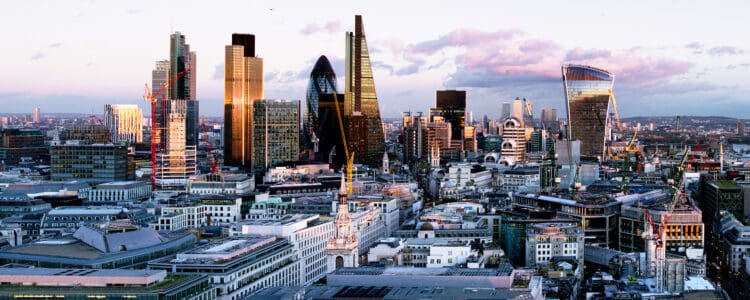Drone attacks in the Red Sea are hampering sea bound traffic next to the world’s most important shipping lane. So how would London protect itself from a drone attack?
British and American warships shot down suspected Houthi-launched drones as attacks in the Red Sea against merchant ships continue for the third straight day, reports USNI.Org.
The Iranian backed Houthi fighters are backed by Iran and the war in Gaza has massively increased these level of attacks.
Defence Secretary Grant Shapps said in a post: “The recent spate of illegal attacks represent a direct threat to international commerce and maritime security in the Red Sea.
He added: “The U.K. remains committed to repelling these attacks to protect the free flow of global trade.”
London Drone attack
We are using the nations’s capital as an example as it is by far largest city in UK and therefore difficult to protect.
Protecting a city like London from a drone attack involves a combination of technological, legal, and strategic measures.
It’s important to note that specific details of security measures may not be publicly disclosed for security reasons.
However, here are some general strategies that could be employed to mitigate the risk of a drone attack on London
It’s important to approach drone security comprehensively, considering both technological advancements and legal frameworks to create a robust defense against potential threats.
The specific measures taken will depend on the evolving nature of drone technology and the unique characteristics of the city’s infrastructure.
Radar Systems
Deploying radar systems capable of detecting and tracking drones in the airspace around the city.
Integration of advanced radar technologies that can differentiate between drones and other flying objects.
Anti-Drone Technology
Implementation of anti-drone technology, such as signal jamming, to disrupt the communication between the drone and its operator.
Deploying systems that can physically capture or disable unauthorized drones.
Geofencing
Establishing geofencing systems to create virtual boundaries that drones are not allowed to breach.
Collaborating with drone manufacturers to implement geofencing technology that prevents drones from flying into restricted areas.
Drone Detection Systems
Utilizing sophisticated drone detection systems that can identify and locate unauthorized drones.
Integrating visual and acoustic sensors to enhance detection capabilities.
Legislation and Regulations
Enforcing strict regulations and laws regarding drone flights, especially in urban areas.
Implementing no-fly zones over critical infrastructure, government buildings, and crowded public spaces.
Law Enforcement and Response Teams
Training law enforcement personnel in drone detection and response tactics.
Establishing rapid response teams equipped to deal with potential drone threats.
Collaboration with Private Sector
Partnering with private companies specializing in drone defense technology.
Encouraging businesses and critical infrastructure operators to invest in their own drone defense measures.
Public Awareness
Raising public awareness about the potential risks of malicious drone use.
Encouraging individuals to report suspicious drone activity to authorities.
Cybersecurity Measures
Implementing cybersecurity measures to protect against potential hacking of drones.
Ensuring that communication channels between drones and their operators are secure.
International Collaboration
Collaborating with international partners to share intelligence and best practices in countering drone threats.
Participating in discussions and agreements on the regulation of drones at the global level.
Related: Watch: Israeli Bulldozer Demolishes Monument in West Bank to Yasser Arafat





